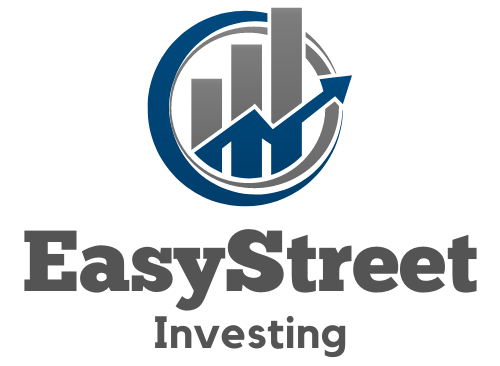In the quest for higher returns, investors often turn to structured products as a way to potentially boost their yields. These financial instruments, crafted from a mix of derivatives and traditional investments, offer customized solutions that can enhance portfolio performance. As we delve into the intricacies of structured products, you’ll discover how they work and the potential benefits they hold for yield enhancement. Expect a journey through the mechanics of these versatile tools and insights on how they can fit into your financial strategy.
Do you want to make your money work harder for you? Structured products could be the key. By tapping into various market conditions, these products aim to provide improved earnings while managing risk exposure. In this exploration, we’ll unpack the strategies behind these complex yet fascinating vehicles and show how they may serve as a bridge to higher ground in your investment landscape. Stay tuned to uncover methods that savvy investors use to amplify their gains without betting the farm.
Important Highlights
1. Structured products offer investors an opportunity to potentially increase their returns in comparison to traditional fixed-income investments. These financial instruments are created by investment banks and can be tailored to meet specific investor needs, including the desire for enhanced yield. They often include derivatives and other complex mechanisms that can provide higher returns but also come with increased risks.
2. The versatility of structured products allows for a wide range of investment strategies, including capital protection, income generation, market growth participation, and hedging against market downturns. Investors can select products that align closely with their risk tolerance and financial goals, whether they’re looking for conservative options or more aggressive growth opportunities.
3. A notable advantage of structured products is their ability to perform in various market conditions. Some structured products are designed to provide positive returns even when markets are stagnant or declining through features such as options and other derivative components. This makes them an attractive option for portfolio diversification and risk management.
4. It’s crucial for investors to conduct thorough due diligence when considering structured products, given their complexity and the inherent risks involved. Understanding the underlying assets, payoff structures, credit risk of the issuing bank, and the potential scenarios under which the product will perform well or poorly is essential before investing.
5. While structured products can enhance yield, they may also come with trade-offs such as limited liquidity, high minimum investment requirements, and complex fee structures that can erode returns. Investors should carefully weigh these factors against the potential benefits to determine if these instruments are appropriate for their portfolios.
Understanding Structured Products
Structured products are financial instruments engineered to facilitate highly customized risk-return objectives. These instruments typically involve a combination of options, securities, and derivatives that allow investors to participate in market gains while potentially limiting losses. They can be tailored to suit specific market views and yield enhancement strategies.
The Mechanics of Yield Enhancement
Yield enhancement is a critical objective for investors, especially in low-interest-rate environments. Structured products can boost yields through the use of embedded derivatives that provide additional income streams or by leveraging market movements. These derivatives often include options that capitalize on volatility or other market factors.
Options Strategies within Structured Products
- Covered Calls: Involve selling call options against a held asset to generate premium income.
- Protective Puts: Involves purchasing put options to hedge downside risk while participating in potential upside.
Incorporating Leverage
Leverage can magnify returns on investment within structured products. By borrowing funds at a lower rate and investing them into higher-yielding assets, investors can increase their effective yield. However, it’s crucial to manage leverage carefully due to the increased risk of loss.
Diversification Through Structured Notes
Structured notes, as part of structured products, offer exposure to a variety of underlying assets. Diversification across asset classes such as equities, commodities, currencies, and fixed-income securities helps enhance yield while reducing unsystematic risk.
Risk Management Techniques
Risk management is integral when dealing with structured products. Using techniques such as principal protection buffers or auto-call features helps in managing potential losses and enhancing overall portfolio resilience.
Principal Protection Structures
Some structured products come with principal protection mechanisms designed to safeguard the initial investment up to a certain threshold. This feature is particularly attractive for conservative investors seeking yield enhancements without compromising safety.
Auto-Call Features
An auto-call feature may trigger an early redemption of the product based on predefined conditions, effectively capping gains but also protecting against market downturns.
Tax Efficiency in Structured Products
Tax treatment of structured products can influence overall yield. Certain structured product configurations may offer tax advantages over traditional investments by deferring tax liabilities or benefiting from lower tax rates on long-term capital gains.
Assessing Market Conditions for Optimal Yield
Evaluating current market conditions is paramount for selecting suitable structured products. Investors must analyze interest rates, economic indicators, and volatility levels to identify opportunities where structured products could outperform traditional investments.
Liquidity Considerations
The secondary market liquidity for structured products can vary significantly. Understanding the trade-off between higher yields and potential liquidity constraints is essential for making informed decisions about these investment vehicles.
Navigating Secondary Markets
Finding buyers for less liquid structured products might be challenging, which could impact the price received upon sale. As such, investors should consider their time horizon and liquidity needs before committing capital into these instruments.
Evaluating Issuer Creditworthiness
The creditworthiness of the issuer is another important consideration since most structured products are unsecured debt obligations. An issuer’s financial stability impacts both the safety of the principal and expected yields.
Mitigating Counterparty Risk
Besides issuer creditworthiness, counterparty risk arises from the performance obligation of parties involved in derivative contracts within structured products. Employing strategies like collateralization or dealing with highly-rated counterparties can mitigate this risk.
Impact of Regulation on Structured Products
New regulations can affect how structured products are created and sold. Keeping abreast with regulatory changes helps investors anticipate shifts in product characteristics and associated risks.
- Analyze Your Investment Objectives: Determine if yield enhancement aligns with your overall portfolio goals before investing in structured products.
- Consult Financial Experts: Seek advice from financial advisors who have experience with complex financial instruments like structured products.
- Understand Product Features: Delve into the details regarding terms, conditions, and embedded derivatives present in any structured product offering.
- Evaluate Liquidity Needs: Reflect on your liquidity requirements given that some structured products may not be easily tradable on secondary markets.
- Mind the Costs: Be aware of fees and costs associated with structuring these custom financial instruments which may affect net returns.
- Mitigate Risks Appropriately: Consider mechanisms such as principal protection or diversification to mitigate potential risks inherent in these investment vehicles.
- Audit Issuer’s Health: Scrutinize the financial health of issuers offering structured products to avoid unwanted credit risk exposure.
- Maintain Regulatory Awareness: Keep informed about regulatory developments impacting the structure and viability of these financial tools within your jurisdiction.
Frequently Asked Questions
What are structured products?
Structured products are investment vehicles based on derivatives such as options, currencies, indices, commodities, or securities. They’re designed to facilitate highly tailored risk-return objectives for investors looking to boost their portfolio yield.
How do structured products enhance yield?
These financial instruments offer potentially higher yields compared to traditional fixed-income investments. They achieve this by leveraging various market conditions through their embedded derivatives.
Are structured products suitable for all investors?
No, they often come with higher risk levels and complexity. Investors need to have a good understanding of the mechanisms involved and should consider their risk tolerance before investing in structured products.
What types of structured products exist?
There’s a wide range including but not limited to principal-protected notes, reverse convertibles, autocallables, and equity-linked notes. Each type caters to different market views and investor appetites.
Can you lose money with structured products?
Yes, while some offer capital protection, others can lead to losses if the underlying asset performs poorly. It’s crucial to understand the product specifics before investing.
Why is it important to consider the issuer’s creditworthiness?
The financial stability of the issuer is vital since these products are not typically covered by government insurance programs like FDIC. An issuer’s default could mean a loss for investors.
How does market volatility affect structured products?
Volatile markets can both create opportunities and increase risk for structured products. Some are designed to perform well in such conditions while others may suffer.
What is the typical duration of structured product investments?
Durations vary widely but they generally have fixed terms ranging from a few months to several years during which your capital might be locked-in.
Are there fees associated with structured products?
Absolutely, fees for structuring, managing, and early redemption can apply. These should be considered when calculating potential returns.
Where can I buy structured products?
You can purchase them through financial institutions like banks or brokerage firms that offer these investment options.
Closing Insights on Yield Enhancement
Incorporating structured products into an investment portfolio can be a strategic move for those seeking yield enhancement. However, it requires a thorough understanding of their complex nature and inherent risks. Remember that these instruments are not one-size-fits-all solutions; they must align with your individual financial goals and risk profile.
To sum up, while the allure of higher potential yields is enticing, it’s critical for investors to conduct due diligence, consult with financial advisors when necessary, and weigh the pros against the cons before committing capital to structured products. The ultimate goal is informed decision-making for a balanced and prosperous investment journey.

